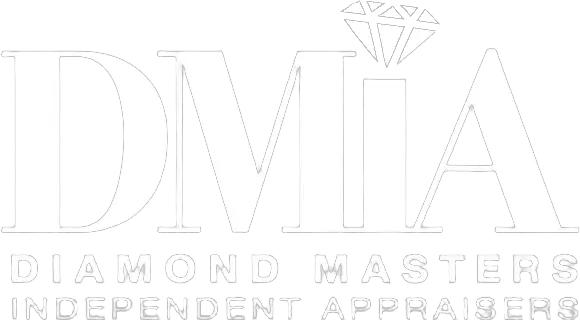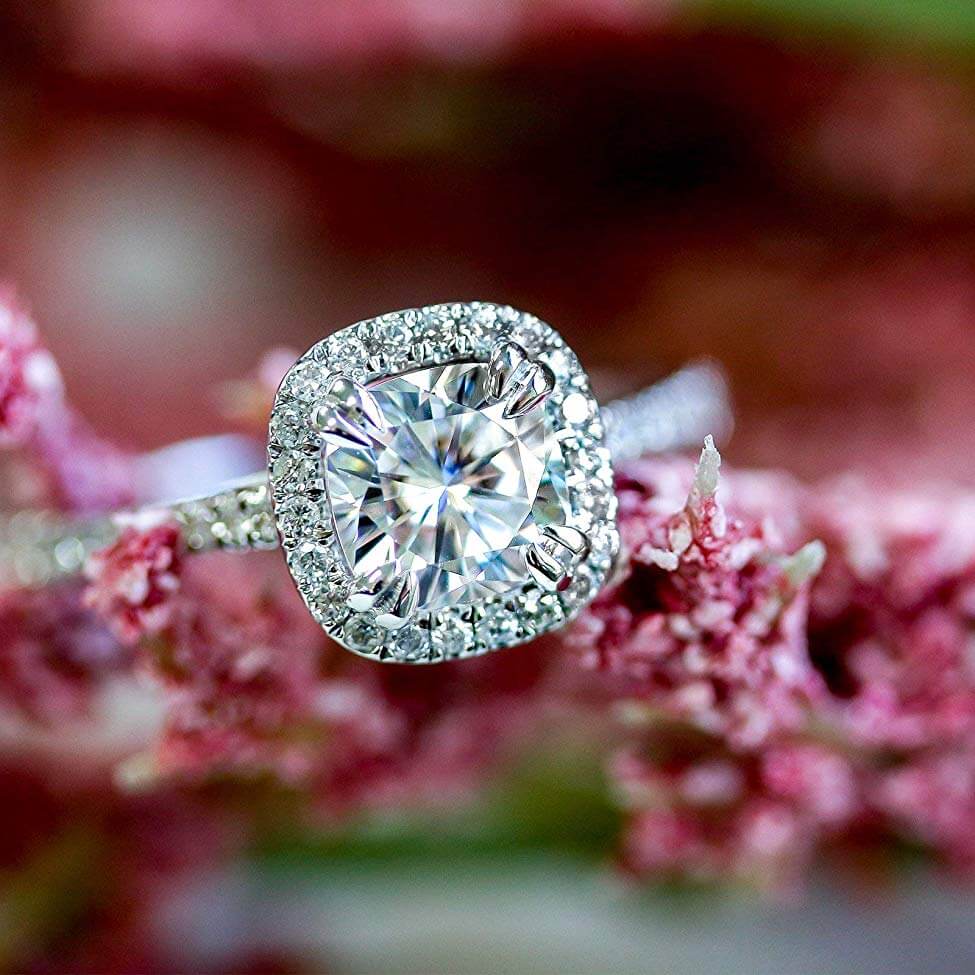HPHT vs CVD Diamonds: A Guide to Lab Grown Diamond Types
Lab grown diamonds have surged in popularity in recent years as an ethical and affordable alternative to mined diamonds. But not all lab grown diamonds are created equal. The two main methods for culturing diamonds in a lab setting are CVD (chemical vapor deposition) and HPHT (high pressure, high temperature).
As a jeweler with over 20 years of experience, I am often asked what the differences are between HPHT and CVD diamonds. Both methods result in high-quality diamonds, but with slight variations in color and clarity.
In this article, I’ll explain how these two types of man-made diamonds are made and delve into their unique characteristics. I’ll also provide my expert perspective on the pros and cons of HPHT and CVD diamonds, including advice on shopping for either.
What Are HPHT Diamonds?
HPHT stands for “high pressure, high temperature,” which aptly summarizes the process used to create these lab-grown diamonds. Through the use of specialized equipment, carbon is subjected to pressures typically between 58,000 to 60,000 atmospheres and temperatures from 1,300°C to 1,400°C. These extreme conditions mimic the natural forces occurring deep within the Earth that forge diamond crystals.
To grow an HPHT diamond, a small diamond “seed” is usually placed in a metal-solvent catalyst and exposed to the HPHT conditions. The seed provides a template that facilitates crystalline growth as carbon atoms accumulate on the structure. Under the intense heat and pressure, the carbon atoms are forced into the rigid tetrahedral structure that forms a diamond lattice. Most HPHT diamonds can be cultured in 2 to 6 weeks.
This process was first developed in the 1950s as researchers experimented with methods for synthesizing diamonds. In the decades since, production techniques have greatly improved. Today, HPHT labs can manufacture diamonds up to 3 carats with color grades of D to K and clarity as high as VVS2. The Gemological Institute of America (GIA) began issuing certification for HPHT diamonds in 2018, stating they display the same material properties as naturally occurring diamonds.
In addition to fabricating diamonds from scratch, the HPHT process can also be used to enhance the color of natural diamonds. Exposure to extreme heat and pressure alters the atomic structure to boost color saturation. This treatment can turn brownish diamonds into vivid fancy colors like yellow, pink, red, green and blue. Diamonds with naturally occurring defects may also become more colorless after HPHT enhancement.
What Are CVD Diamonds?
Rather than replicating the immense forces below ground, CVD (chemical vapor deposition) relies on advanced technology to simulate the conditions above ground that create diamonds. This process breaks down hydrocarbon gases like methane into carbon atoms that settle layer by layer on diamond seed plates inside a small bell jar reactor.
Temperatures inside the CVD reactor reach 800°C to 1,200°C to provide sufficient energy for carbon atoms to organize into the rigid diamond structure. Modern microwave generators allow the gases to heat up rapidly. The reactor chambers are no larger than a coffee mug yet can accommodate over a dozen diamond seeds at once. CVD diamond growth rates under these highly controlled conditions can exceed 300 carats per month.
First patented in the 1980s, CVD is now the most common and affordable method for producing lab-grown diamonds. The technology continues to advance, yielding diamonds with exceptional purity and precision. CVD has also enabled manufacturers to push the limits on gemstone sizes, creating diamonds over 10 carats. In 2023, a 32-carat diamond was produced!
Comparing CVD and HPHT Diamond Quality
When it comes to factors like carat weight, cut, clarity, and color, there are some notable differences between HPHT and CVD diamonds. As a jeweler who works with both, I evaluate these gems with a keen eye for quality.
Here are some of the most significant ways CVD and HPHT diamonds vary:
| Attribute | HPHT Diamonds | CVD Diamonds |
|---|---|---|
| Cost | 20-40% less expensive | Higher cost for size |
| Color | G to J | D, E, or F |
| Clarity | VS | VVS |
| Cut Quality | Excellent | Excellent |
| Carat Limit | Up to 3 carats | Over 10 carats |
| Growth Time | 2 to 6 weeks | Rapid (300+ carats) |
Value and Cost
In general, HPHT diamonds will cost 20% to 40% less than CVD diamonds of equivalent size and quality on today’s market. The price differential stems from HPHT’s limitations on larger gemstones compared to CVD’s capabilities up to 10 carats and beyond. Exceptional clarity and colorlessness also drive up the price tag for CVD diamonds.
Color
CVD pulls ahead when it comes to achieving colorlessness graded as D, E or F. The highly controlled process removes impurities like nitrogen that impart natural diamond color. HPHT diamonds tend to grade G to J on the color scale with a pale yellow to near colorless appearance.
However, HPHT can enhance the color saturation in diamonds with existing defects to create fancy vivid yellows, pinks, blues and other rainbow hues.
Clarity
Due to their crystalline perfection, CVD diamonds rate as the top tier of VVS clarity with very, very slight inclusions. Less than 1% of natural diamonds reach this elite clarity caliber.
HPHT diamonds commonly rate VS clarity on the GIA scale with minor flaws visible under 10x magnification that do not impact overall beauty.
Cut
Diamonds grown by CVD exhibit exquisite cut quality, the highest precision, and symmetry. When studying these gems under a loupe, I am always impressed by the meticulous workmanship made possible by this growth process.
HPHT diamonds also display excellent polish and symmetry, though CVD has the advantage of “designer” customization.
Carat
One of the greatest benefits of CVD is the ability to culture large diamonds exceeding 10 carats, including impression cuts like radiant and Asscher. The demand for these monster rocks continues to rise.
HPHT synthesis methods have yet to achieve such scales and are typically limited to melee accent stones under 1 carat.
Shopping Advice for HPHT and CVD Diamonds
I only recommend buying HPHT or CVD certified diamonds from suppliers committed to full transparency regarding how their stones are produced. Seek retailers that specialize in lab grown diamonds, clearly stating the growth method and providing grading reports from respected gemological labs like GIA or AGS. Never assume all man-made diamonds are equal in quality.
A quick Google search will reveal dozens of sellers offering HPHT and CVD diamonds. But not all of these retailers have equal credibility within the gem community. Review policies on returns, repairs, exchanges and guarantees.
A longstanding brick and mortar jeweler who recently expanded into lab grown diamond sales may be preferable to a pop-up website with no history.
The price per carat drops significantly above one carat for HPHT diamonds. Since the CVD process can grow larger diamonds with excellent clarity and color, these gems will command premium pricing over 2 carats.
Estimated Diamond Price Comparison by Carat Size (USD)
| Carat Size | HPHT Diamond Price Range | CVD Diamond Price Range |
|---|---|---|
| 0.25 | $300 – $800 | $400 – $1,000 |
| 0.50 | $800 – $2,500 | $1,000 – $3,000 |
| 1.00 | $2,500 – $8,000 | $3,000 – $10,000 |
| 1.50 | $5,000 – $15,000 | $6,000 – $20,000 |
| 2.00 | $8,000 – $25,000 | $10,000 – $30,000 |
| 3.00 | $15,000 – $45,000 | $20,000 – $60,000 |
| 4.00 | $25,000 – $80,000 | $30,000 – $100,000 |
| 5.00 | $40,000 – $125,000 | $50,000 – $150,000 |
If you’re looking for rings with a large center stone, expect to pay more for CVD quality.
When browsing listings for HPHT diamonds, color images may exaggerate the stone’s true appearance. An H color diamond could look whiter than its grading suggests. Be sure to read the full grading specifications.
Also, enhanced color diamonds will typically cost around 30% less than their equivalent quality mined diamond counterparts. This discount results from the HPHT treatment.
The Bottom Line
In my personal and professional opinion, the future looks brightest for CVD cultured diamonds.
HPHT will remain popular for enhancing diamonds’ natural beauty and as an affordable entry point to lab grown stones. But expect to see demand for top color and clarity grades shift toward CVD.
Both methods have important roles with the rise of lab diamonds. Yet CVD’s advancements unlock the full potential of what science can accomplish when we grow diamond dreams.

